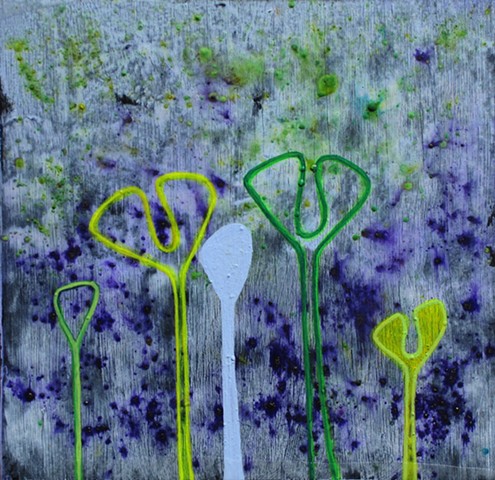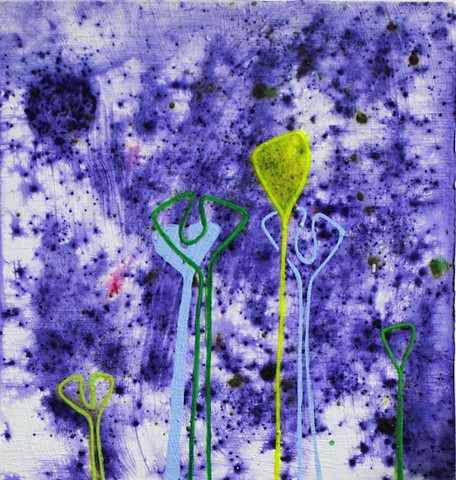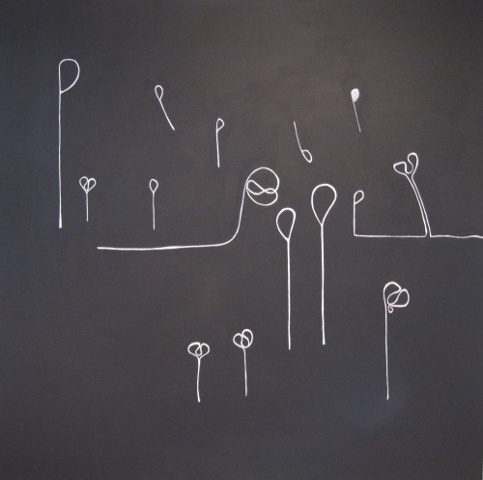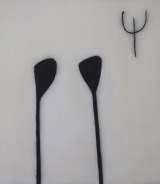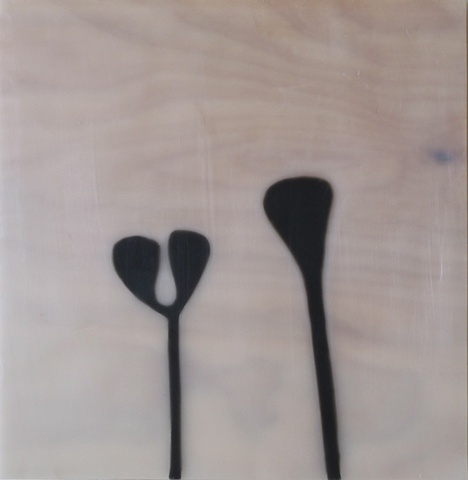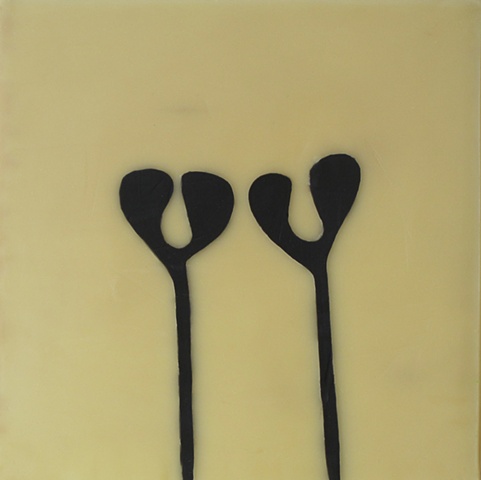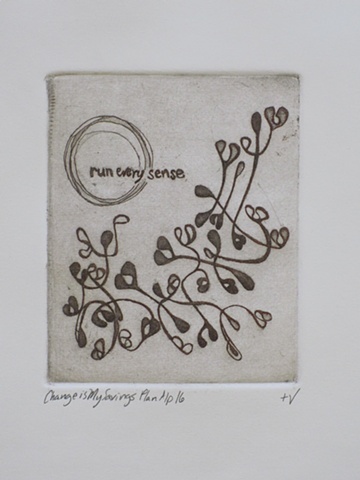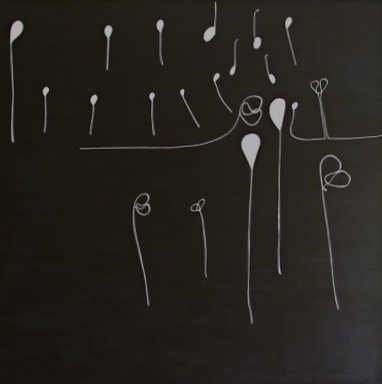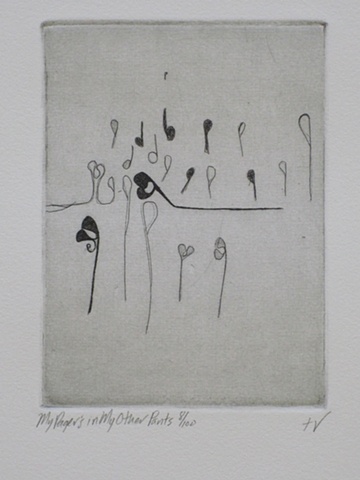AUTOPOIESIS
Interview by Jane Miller
JM: What is autopoiesis?
VG: Autopoiesis is a scientific term that describes the paradox that, in order for beings to be autonomous, they need to obtain resources from their environment. It plays out in these works metaphorically in the relationship of the pieces to each other, and in the way the viewer interacts with the pieces.
JM: What are the advantages to working in a small format?
VG: The size gives me an opportunity to move back and forth, which inspires new combinations of forms and methods. In this case, I made encaustics, and I painted with acrylic, water, polyurethane, and some special mineral pigments from Peru; the look of the pigments, when sprinkled as dust and then wetted, inspired me to use oil paint over the encaustics to create some similar effects.
JM: Do you encourage your encaustic pieces to imitate sculpture?
VG: Definitely. I use sculpting tools when I make them. Pottery tools, dentistry tools, too. Also, many of the encaustic techniques imitate intaglio printmaking – similar to the way one etches lines in a metal plate, I start with a well of encaustic medium and carve the figures into it. Instead of using ink, I use medium in different colors to create an image or story.
JM: Your work seems to use both figurative and abstract elements. Do you see a relationship there, or do you experience those forms separately?
VG: I would call this series abstract symbolism, meaning my figures are less literal and more symbolic – some viewers experience the shapes as human, others as plants, etc.
JM: Your themes are often dark but your color palette is bright. Do you care to comment on that seeming disparity?
VG: I have seen that in other series I’ve done, but in this current body of work even the black, while literally “dark,” has bright, airy figures who are doing things, lively things, together at night. So I would say it is simply night, rather than describe the black backgrounds as emotionally heavy. No one’s alone, everyone’s with someone having a good time.
